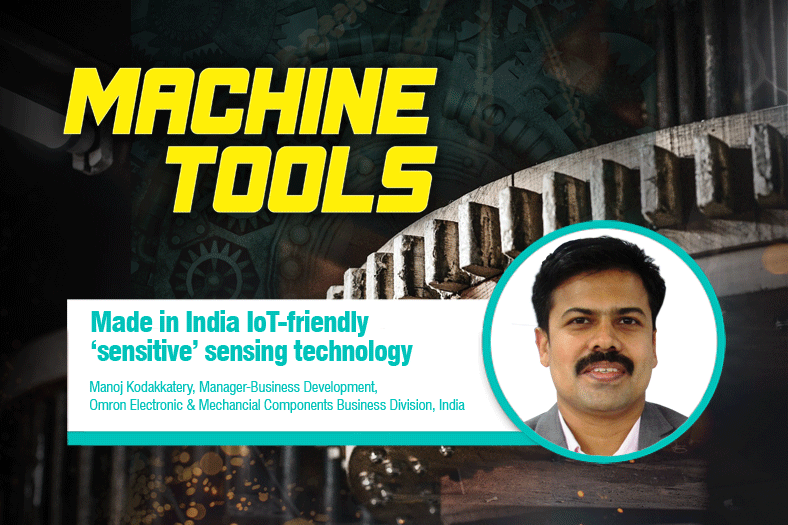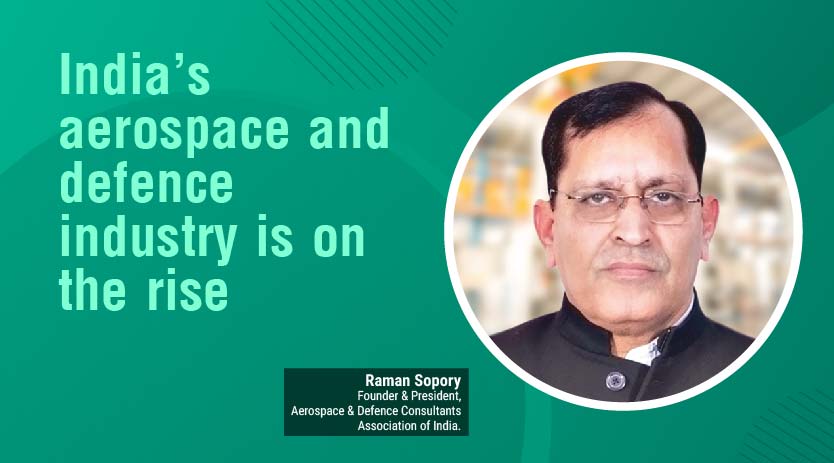Made in India : IoT-friendly ‘sensitive’ sensing technology
January 11, 2019 3:09 pm
M anoj Kodakkatery, Manager-Business Development, Omron Electronic & Mechancial Components Business Division, India discusses Omron’s latest offering in sensing technology solutions that are durable and compactable with all the embeddded applications.
Please walk us through your company’s offering in terms of sensing technology solutions?
Centered upon ‘Internet of Things’ based solutions, OMRON has been working on presenting offerings in the sensors’ arena that have utility across varied industries such as building automation, factory automation, home appliances, vending machines, robotics, automotive, energy and medical equipment. These are highly compact and durable sensors which when embedded in equipment/devices, collects data and contribute towards the proper functioning of the complete solution. This is possible owing to the technologies they come imparted with, such as – human sensing, condition sensing, heat sensing, flow sensing, object sensing, distance sensing, vibration sensing to name a few.
How imperative it is to have vibration sensors on board? Which industrial applications, does vibration sensors find themselves applicable?
Omron has launched the world’s smallest-class vibration sensors that have a huge scope of being utilised in a wide range of applications. They are used in embedded applications such as vibration detection in machines at power stations; earth quake detection in highways, bridges, tunnels, railways, gas meters, electricity meters, disaster prevention systems, home appliances such as heaters, gas stoves as well as industrial appliances such as printing machines, combustion furnaces, etc. Sensing vibrations up to -2000 to 2000 gal, they are highly compact, reliable, programable and are also IoT-friendly making them utile for the secondary usage of earthquake related data.
How does a dust sensor work? How effective will it be in minimising the dust fallout?
The core competency of a dust sensor is to detect the presence of particles in the air. Omron dust sensors are considered highly sensitive – having three to four times greater sensitivity than most of the other offerings in the market. They can detect particles as small as 0.5 micron, much less than the size of the PM2.5 standard for fine particulate matter in the atmosphere. Also, they are highly compact and come equipped with high air throughput, of around 6 times that of established alternatives, giving improved sensitivity of response to changes in the environment. Since an LED technology is used, it provides longer life and remains maintenance free. The higher performance and greater sensitivity of the sensors allow tighter pollution control as well as the creation of more effective air purifiers and similar systems.
How are OMRON’s products and solutions creating an enabling ecosystem for government’s initiative for “Make in India”?
Our products and solutions are adding value towards creating advanced and reliable end-to-end ecosystem of industrial automation solutions which is one of the key requirements to make initiatives like ‘Make in India’ successful. The manufactures need to keep up with the latest Industry 4.0 technology trends and the most optimum level of industrial automation to contribute to the ambitious targets set under this initiative.
What is your company’s growth strategy for FY2018-19 and what other strategic plans can we expect to hear soon?
For OMRON, customers remain top priority and we are always ready to take up challenges which not only create value to our clients but also improve the overall end-user experience. When it comes to sensors, we want to facilitate accurate and lean data to help innovators develop customised solutions. We strive to anticipate the needs of the society and find the right partners and system integrators who share our vision and wish to create solutions meant for the greater good of public.
The manufactures need to keep up with the latest Industry 4.0 technology trends and the most optimum level of industrial automation to contribute to India’s ambitious targets.
Manoj Kodakkatery, Manager-Business Development, Omron Electronic & Mechancial Components Business Division, India
Cookie Consent
We use cookies to personalize your experience. By continuing to visit this website you agree to our Terms & Conditions, Privacy Policy and Cookie Policy.

















 English
English Hindi
Hindi